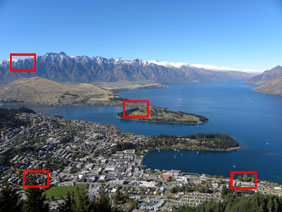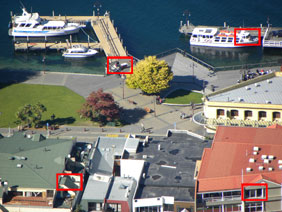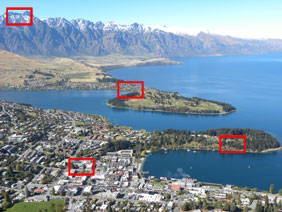Nikon COOLPIX P90
-
-
Written by Gordon Laing
Nikon COOLPIX P90 vs Canon PowerShot SX10 IS Resolution
Nikon COOLPIX P90 |
Canon PowerShot SX10 IS | |
 |  | |
f5, 64 ISO |
f4, 80 ISO | |
 |  | |
f5, 64 ISO |
f4, 80 ISO | |
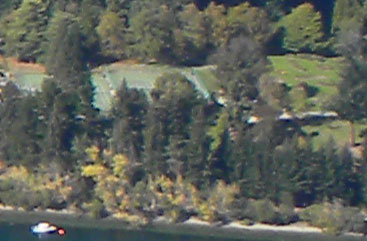 | 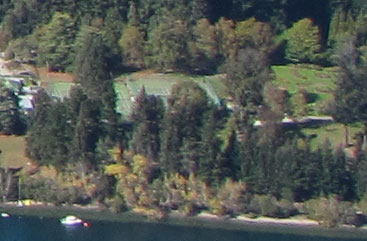 | |
f5, 64 ISO |
f4, 80 ISO | |
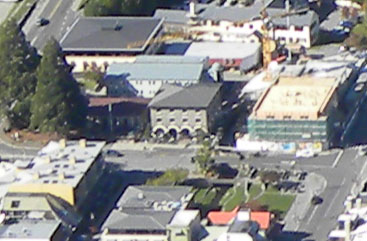 | 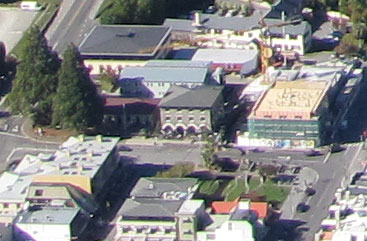 | |
f5, 64 ISO |
f4, 80 ISO |
To compare the optical performance of the cameras when fully zoomed-out, we shot this scene with the Nikon COOLPIX P90 and Canon PowerShot SX10 IS using their widest focal lengths – an equivalent of 26 and 28mm respectively. As before, we used their best quality JPEG settings, lowest sensitivities and default processing options. The cameras were again set to their Program modes to evaluate their automatic performance. The image to the left was taken with the Nikon COOLPIX P90 at a sensitivity of 64 ISO, and the lens set to 4.6mm (26mm equivalent), f5.6; the original 12M Fine JPEG file measured 5.37MB. The crops are taken from the areas marked by the red squares and presented here at 100%. Note the Canon PowerShot SX10 IS has a slightly lower resolution which would normally result in a slightly larger area in the crops below, but its slightly longer focal length when zoomed-out almost exactly compensates here. With both cameras fully zoomed-out, there’s a similar story to that above: The COOLPIX P90 impressively avoids coloured fringing at these wider focal lengths, but fine details are smeared and again there’s undesirable edge artefacts on the buildings in the second row. There’s few who’d prefer the image quality of the P90 over the SX10 IS here. But there’s still one more test to come on this page, so scroll down to see how they compare when fully zoomed-into their longest respective focal lengths. |
Nikon COOLPIX P90 |
Canon PowerShot SX10 IS | |
 |  | |
f5.6, 64 ISO |
f4, 80 ISO | |
 |  | |
f5.6, 64 ISO |
f4, 80 ISO | |
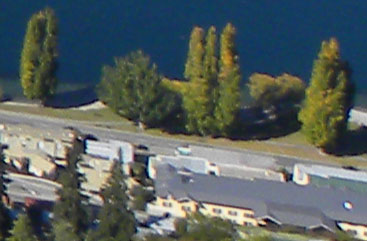 | 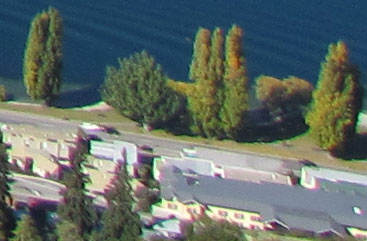 | |
f5.6, 64 ISO |
f4, 80 ISO | |
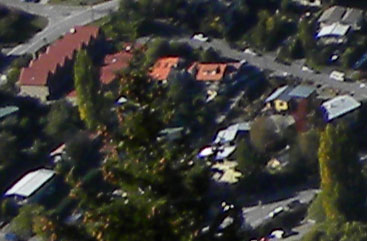 | 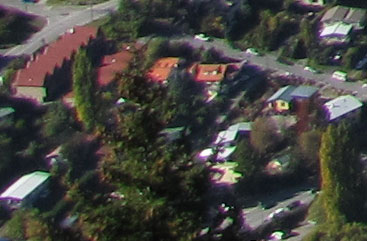 | |
f5.6, 64 ISO |
f4, 80 ISO |
To compare the optical performance of the cameras when fully zoomed-in, we shot this scene with the Nikon COOLPIX P90 and Canon PowerShot SX10 IS using their longest focal lengths – an equivalent of 560 and 624mm respectively. As before, we used their best quality JPEG settings, lowest sensitivities and default processing options. The cameras were again set to their Program modes to evaluate their automatic performance. The image to the left was taken with the Nikon COOLPIX P90 at a sensitivity of 64 ISO, and the lens set to 110.4mm (624mm equivalent), f5; the original 12M Fine JPEG file measured 5.28MB. The crops are taken from the areas marked by the red squares and presented here at 100%. Note the Canon PowerShot SX10 IS crops show a larger area due to a combination of its slightly lower resolution and its shorter focal length when zoomed-in. Most super-zoom cameras suffer from coloured fringing when zoomed-into their longest focal lengths, and both models are showing the signs here. However, the COOLPIX P90 clearly suffers from it to a much worse degree than the SX10 IS. This is also taking into account the fact the P90’s fringing artefacts will appear slightly larger than those of the Canon when viewed at 100% because of its slightly higher resolution. Scale the P90’s crops down to show the same area as the SX10 IS or vice versa though and you’ll see the Canon’s still better avoiding fringing issues. Beyond fringing there’s a return of the processing artefacts seen in the other samples above where fine detail has become smeared. Look at fine lines on both crops and remember the P90 has the advantage of not just a slightly higher resolution, but also a slightly longer focal length – as such it should be easily out-resolving the SX10 IS on fine detail in this particular example, but that’s clearly not the case in practice. So the P90 suffers from noticeable fringing when zoomed-in and smearing from processing artefacts across its range; the former is particularly disappointing given Nikon applies effective in-camera correction of fringing in its latest DSLRs, and Panasonic has exploited similar digital corrections on its super-zooms for some time. But does the Nikon super-zoom perform any better perform in terms of sensitivity? Find out in our Nikon COOLPIX P90 High ISO Noise results. |
Nikon COOLPIX P90 |
Canon PowerShot SX10 IS | |
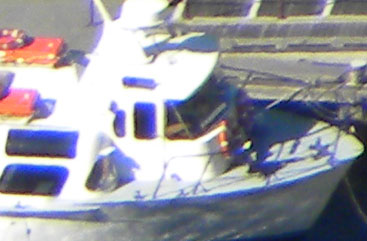 | 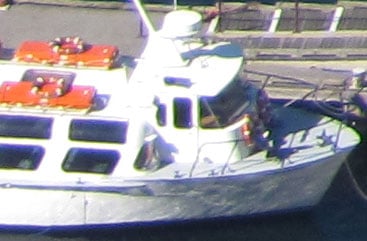 | |
f5, 64 ISO |
f5.7, 80 ISO | |
 |  | |
f5, 64 ISO |
f5.7, 80 ISO | |
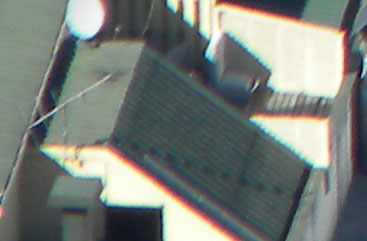 | 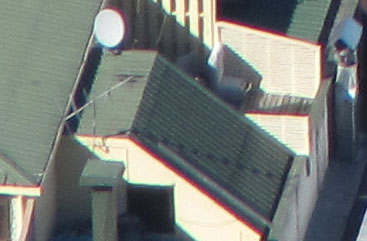 | |
f5, 64 ISO |
f5.7, 80 ISO | |
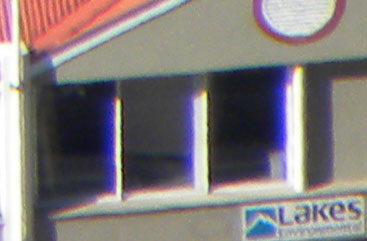 | 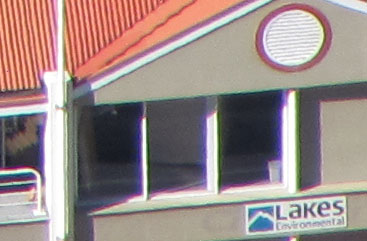 | |
f5, 64 ISO |
f5.7, 80 ISO |
|
|
The image above was taken with the Nikon COOLPIX P90 at a sensitivity of 64 ISO, and the lens set to 7mm (39mm equivalent), f5; the original 12M Fine JPEG file measured 5.11MB. The crops are taken from the areas marked by the red squares, and are presented here at 100%. The Canon PowerShot SX10 IS crops show a slightly larger area because of its slightly lower resolution.
The COOLPIX P90 boasts 12.1 Megapixels to the Canon’s 10, but as seen in the crops below, that doesn’t translate into greater detail – indeed judging from the samples here, the P90’s image quality is suffering in a number of respects compared to its major rival.
Starting with the first crop taken from the top left corner of the image, the P90 may be impressively bereft of the coloured fringing that’s apparent on the SX10 IS sample, but softening and distortion in the corners has resulted in reduced detail; even with the fringing, the Canon crop is preferred.
The second, third and fourth rows of crops tell a similar story where despite having extra two Megapixels, the P90 just isn’t recording as much real-life detail as the SX10 IS. Fine detail in foliage areas has become smeared through processing, bright highlighted areas like the roofs in the fourth row are blown-out, and there’s also undesirable edge effects on the buildings in the second row. Overall there’s an additionally an electronic appearance to the P90’s crops which gives them a less natural look than the SX10 IS.
So a disappointing start for the P90 in our tests, but this is only the first of many, so scroll down to find out how it compares when full zoomed-out, and fully zoomed-in. Alternatively if you can’t wait to see how the cameras compare in terms of high sensitivities, then head straight over to our Nikon COOLPIX P90 High ISO Noise results.
